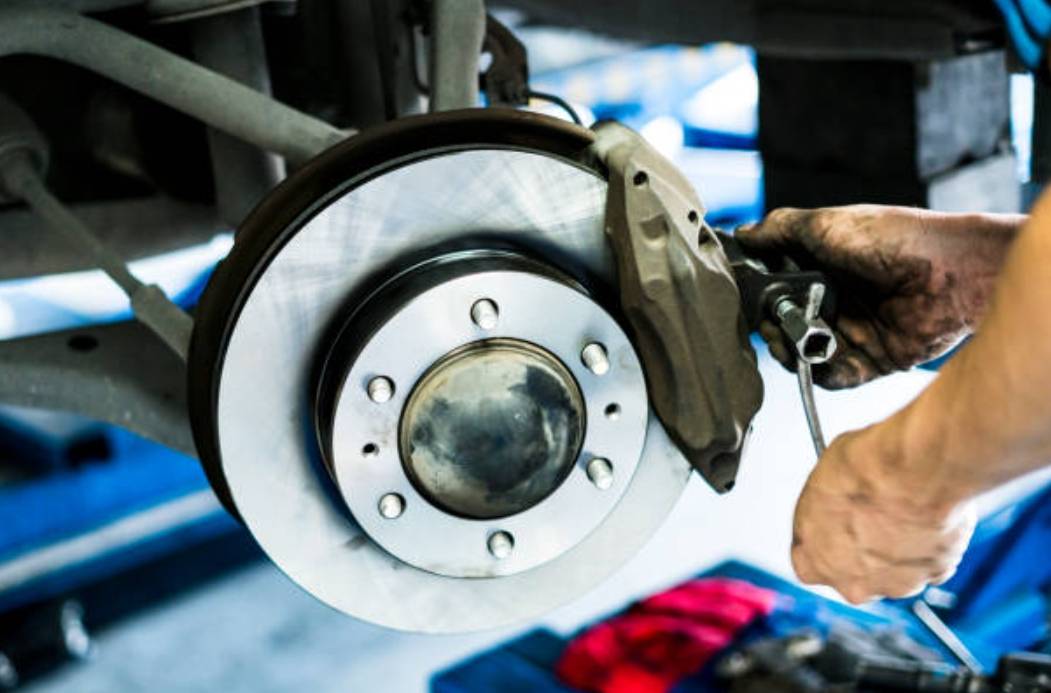The brakes in a car are one of the most important systems that largely determine the safety of the car, its driver and passengers. And the braking system requires good and reliable pads.
Pads are constantly operated in conditions of extreme loads. They are subjected to adverse conditions due to high humidity, dirt, frequent temperature fluctuations, etc. All these influences contribute to the accelerated wear of the pads, due to which experienced car owners name this unit as one of the most frequently required replacement.
Thus it is extremely important to carry out timely check of pads to prevent operation of the vehicle with faulty brakes and not to expose yourself and your loved ones to danger.
How often do the pads need to be replaced?
Your vehicle owner’s manual will always tell you how often the pads need to be changed. However, it is not always possible to blindly trust the instructions that come with the car. The pads will wear individually, depending on the conditions in which they are used. Their wear rate is influenced by a large number of factors, so it is impossible to establish a universal driving time, after which the unit should be replaced.
The wear rate is affected by:
- The material from which the friction linings are made;
- the metal characteristics of the discs or drums;
- the individual driving style of the driver;
- and more.
Therefore, it is important to have your pads checked periodically so you don’t miss the point when they should be replaced. Only on the basis of the inspection, rather than by the manual, can you know exactly when it is time to replace them.
By the way, many foreign cars are now equipped with brake pad wear sensors, which notify the driver that the unit requires replacement. However, even in this case, you should not forget about safety and periodically check.
Why you need to check the pads, if there are sensors
Every driver sooner or later faces the need to replace the brake pads, but it is far from always necessary to trust the sensor readings. That said, motorists note that a very common cause of improper sensor signals is sloppy or improperly installed pads. In addition, dirt, rust, and oxidation on the sensors can cause the sensor to malfunction.
In practice, it looks like this. At a certain distance from the end of the pad (in thickness) there are special contacts, which, if the unit is heavily worn, begin to touch the brake disc, after which the lamp on the dashboard automatically lights up about the wear of the pads
If the installation is done incorrectly, the contact can bend or break off completely, so even if the pads are completely worn out the motorist will not receive any notice, and can continue to operate his car, although the brakes in it will already work badly.
Other factors also lead to similar consequences, the contact can oxidize, get dirty, rust, etc. And because of this, the sensor will not be able to inform the motorist about the presence of the problem in a timely manner.
That is why experts and experienced drivers strongly recommend not neglecting the opportunity to go to the car service for periodic inspection of the state of the pads.
Yes, if necessary, you can check the pads yourself, usually this work does not require any special skills. If your car has cast discs with large holes, through which you can see the elements of the braking system, then you can see the problem even without dismantling the wheels: just assess how much the pad has worn down (usually you will see only the outer pad).
If you can’t tell by eye how thick the pad is (and how worn it is) you can always use a ruler – the ruler is placed at the end of the brake disc.
If the holes in the wheels do not provide sufficient visibility, you will have to remove the wheel to assess the condition. This task, although it complicates the process, but also does not require special skills. In addition, experts always recommend removing the pads, so you can also assess the condition of the second pad and the overall appearance of the brake disc.
Even if only one pad on a wheel is badly worn, it can cause problems with the use of the braking system, and therefore require replacing both pads. It is recommended that all pads on one axle be replaced at once.
According to some professionals, the minimum pad thickness at which it is possible to safely operate the car is 1.5-2 mm, but others believe that as soon as the pads reach a thickness of less than 4.5-5 mm, they should be changed so as not to put yourself in unnecessary danger.
Why should the pads be replaced when wear is detected?
Operating a vehicle with worn pads can result in damage to the brake disc or drum. In this case, the cost of repair work will increase significantly. However, the risk of losing money is not the most important thing.
The most important thing every driver should know is that the pads directly affect the performance of the entire braking system, if you drive a car with worn pads, the probability of getting into an accident increases dramatically.
What do I need to know when buying pads?
Choosing brake pads should not be guided only by price. The low cost of the unit may indicate its low quality, inability to perform its functions and very rapid wear and tear. It is best to purchase original brake pads for your car – those recommended by the vehicle manufacturer.
Even if third-party pads are the right size and shape, they may have different qualities. This can cause you to lose money, have other parts of the braking system fail, and even crash.
It is always better to spend a little more money but buy a quality part that will fit your car and its operating conditions perfectly.
Never skimp on the things that your and your family’s safety depends on when getting into your car.

